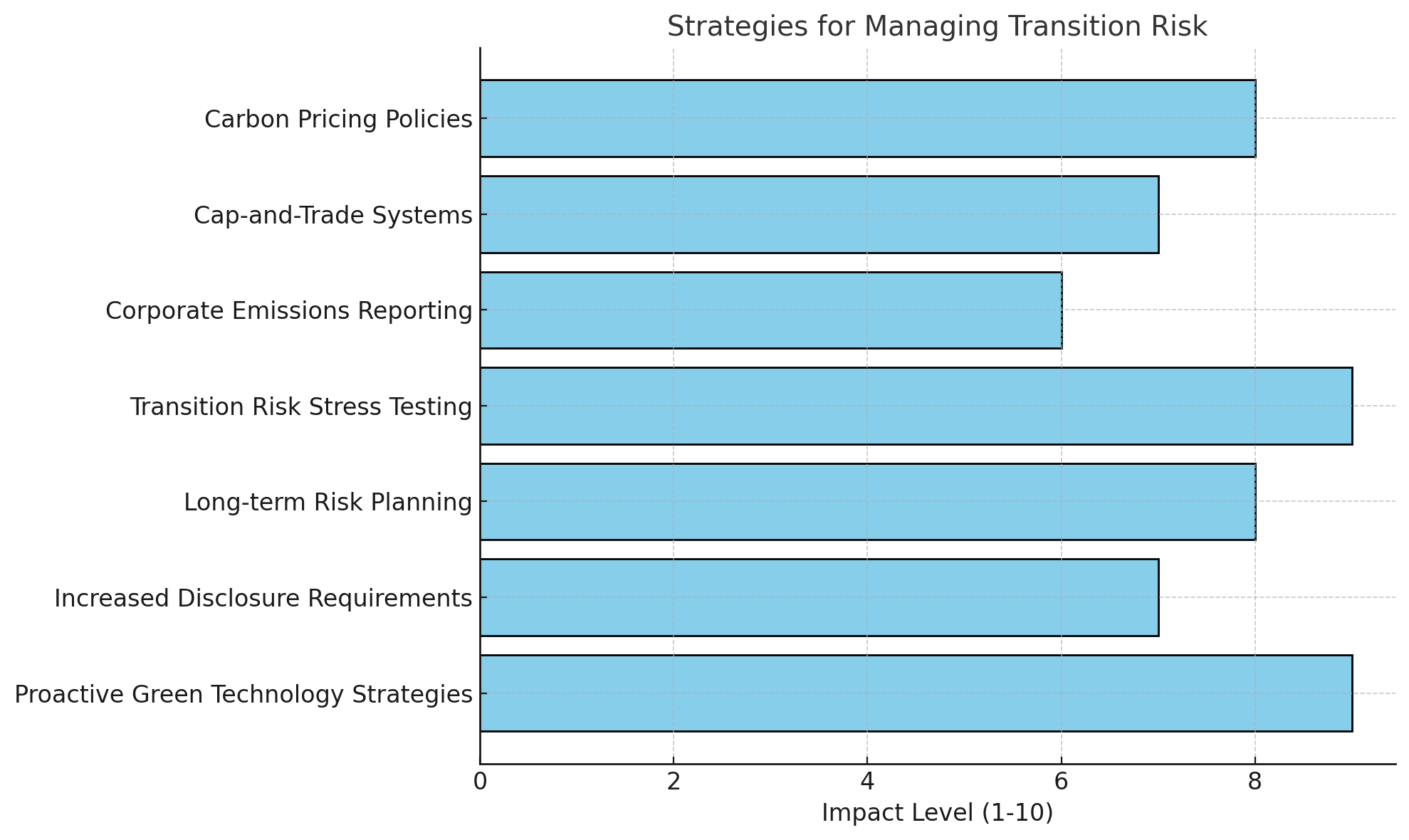
An overhead view of turbulent water swirling around a single white object on sandy ground.
Transition Risk: Navigating the Financial Implications of Climate Mitigation Strategies
Introduction: Understanding Transition Risk
Transition risk relates to economic and financial uncertain elements in the efforts towards climate change mitigation. It is an important issuer in the transition toward a low carbon economy. This tool expresses ways by which government leverages such things like carbon pricing, cap-and-trade and taxes to induce greenhouse gases-reduction activity in companies. Consequently, these very strategic choices of environment regulation arena are often employed across sectors and may sometimes create a major disorientation in the national economy. Indeed, the very ambiguity entails financial risks that can, in many cases, hurt companies and also unsettle the financial stability system.
Transition Risk and Climate Action: A Necessary Tension
When people talk about climate change and its dangers, the first thing that comes to everybody's mind is physical risk. Yet transitions also create a risk factor by virtue of reducing greenhouse gas emissions, which requires big changes in industries that have over the years relied upon carbon. It is the distinct changes in policies and society toward climate changes themselves that may be so risky in the end.
In 2015 Mark Carney, previously Governor of the Bank of England, warned the global community about the potential for overlapping transitions to destabilize economic systems as well as ruin the financial systems of such economies. In the same year, the Paris Agreement called for keeping temperature rises over the global average temperature levels that prevailed before industrialization of the planet to below 2°C with an aspirational goal of 1.5°C. Urgent action-really urgent action-is needed to keep within these limits. Though it is likely that this will promote economic shifts so rapid that "whammies" on the global economy could be numerous.
Investors play a very vital role here. As they anticipate a low-carbon future, they would be expected to withdraw from, for instance, risky assets such as fossil fuel companies. This event will manifest through depreciation in prices of such companies, and may result in significant waves and impact on financial markets. The further-reaching the policies in relation to climate, the more intense the risks. As such, transition risks are one of the most vital components of action on climate on the one hand but also provoke economic instability on the other hand.
Corporate Vulnerabilities in the Face of Transition Risk
Industries that rely heavily on carbon-based methods face tough challenges. To survive, these companies may need to make big changes, which could mean higher costs, lower revenues, or losing value in their assets. For example, fossil fuel companies might find their reserves useless in a low-carbon world, a problem often called "stranded assets."
Financial markets tend to act early. A company’s value might drop not because its current performance is bad but because markets predict less demand for its products in the future. This kind of decline reflects how markets view transition risk, especially in industries tied to long-term fossil fuel investments.
Investigating the Intersection of Transition Risk and Finance
One recent study looked at how much financial markets account for transition risk in corporate debt costs. It analyzed 200 companies between 2012 and 2017, focusing on how vulnerable they were to climate-related changes. The researchers created two metrics: current risk (based on emissions and fossil fuel production) and future risk (based on reserves and investments in polluting energy).
Based on the study, firms bearing high immediate risk have higher borrowing costs compared with other firms, as immediate environmental risk often prompts due notice by the lenders. However, the available evidence above does not show that future risks or unburnable reserves were sufficiently actionable for purposes of explaining borrowing costs. There seems to be an effect from 2015, presumably from comments like that made by Carney and subsequent developments after the Paris Agreement was negotiated, but the direction is vague as a whole.
The Dual Role of Regulation in Managing Transition Risk
Regulation can both create and help manage transition risk. Policies like carbon pricing and emissions reporting push companies to consider climate risks and prepare for a low-carbon future. Regulations also promote transparency, requiring businesses to show how they manage these risks and are ready for changes.
By addressing transition risks proactively, regulators aim to reduce financial shocks. Good regulation helps companies and financial systems adapt to new policies and market conditions rather than being caught off guard.
Strengthening the Financial System’s Response to Transition Risk
To improve how financial systems handle transition risk, the following actions are suggested:
- Better Climate Risk Simulations: Stress tests, like those from the European Central Bank, could help assess how financial institutions would handle both physical and transition risks over time.
- Longer-Term Risk Planning: Transition risks often play out over decades, but many investors focus on the short term. Extending planning horizons to 10–30 years would align strategies with climate realities.
- More Disclosure Requirements: Requiring financial institutions to be clearer about how they manage climate risks could improve market understanding and stability.
- Encouraging Proactive Strategies: Policies that reward early adoption of green technologies could help reduce risks and make transitions smoother.
The following graph highlights the relative impact levels of these strategies in managing transition risks effectively.

Conclusion: Balancing Climate Action and Economic Stability
Transition risk is a key part of fighting climate change, highlighting the trade-offs between decarbonization and the economic challenges it brings. While it’s necessary for reducing global warming, these risks need careful management to avoid financial chaos. Strong regulations, long-term planning, and better transparency are essential for a stable transition to a low-carbon economy. Balancing climate goals with economic stability will remain a major challenge for the global community.


